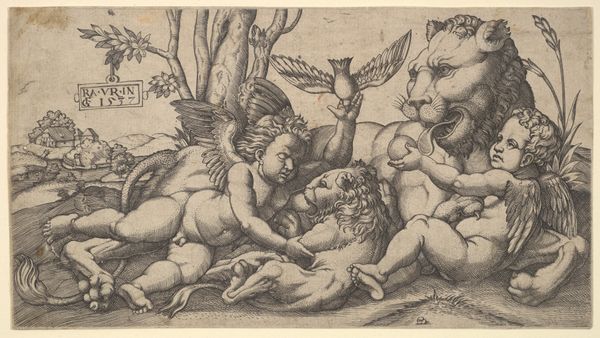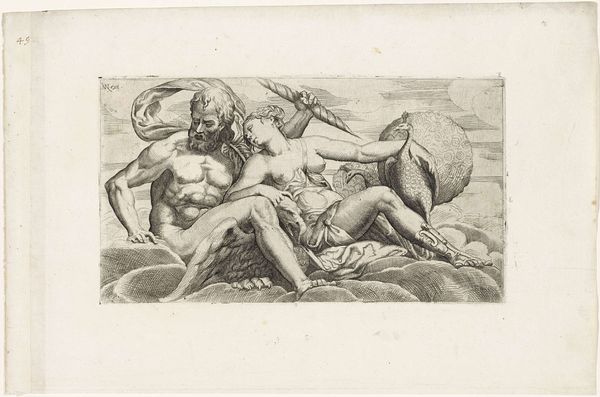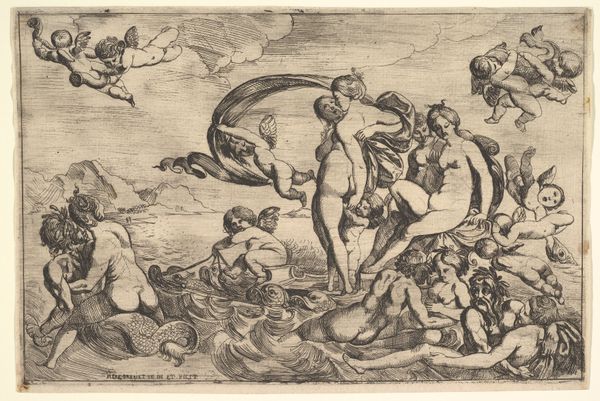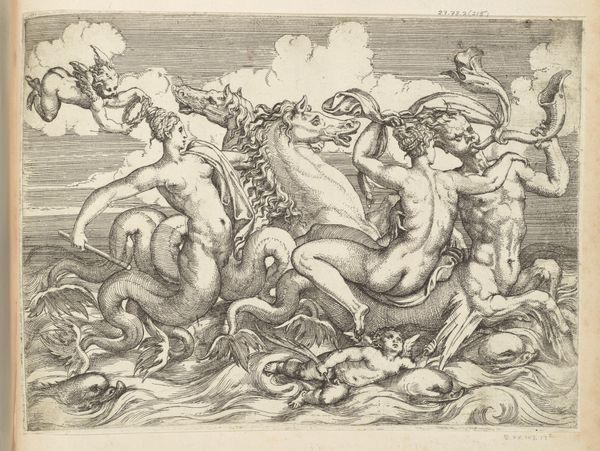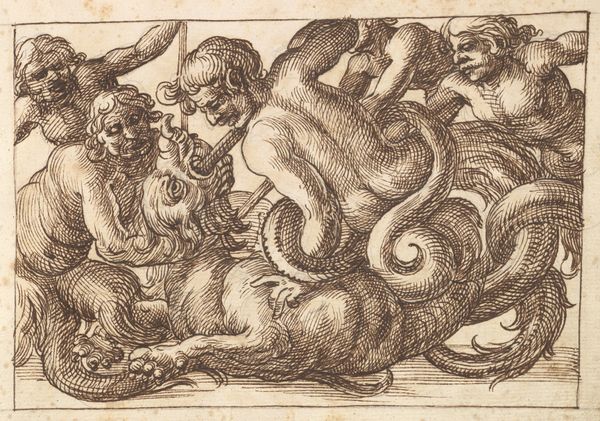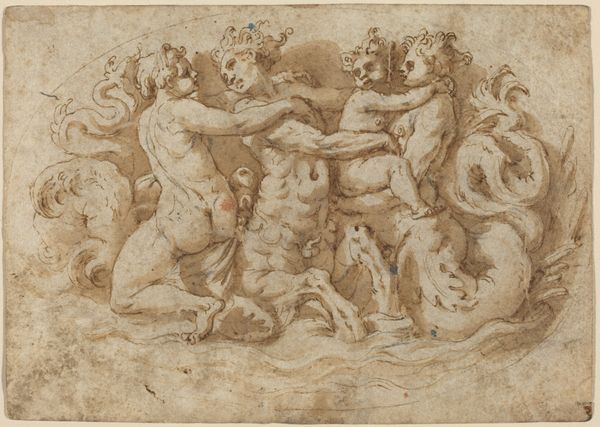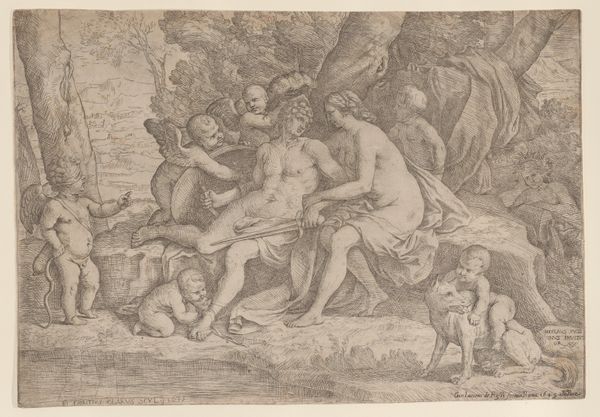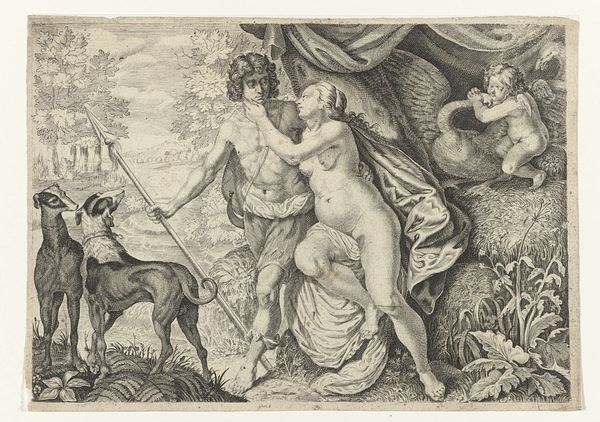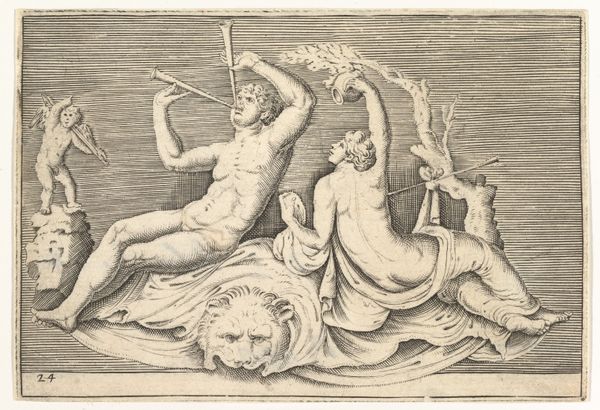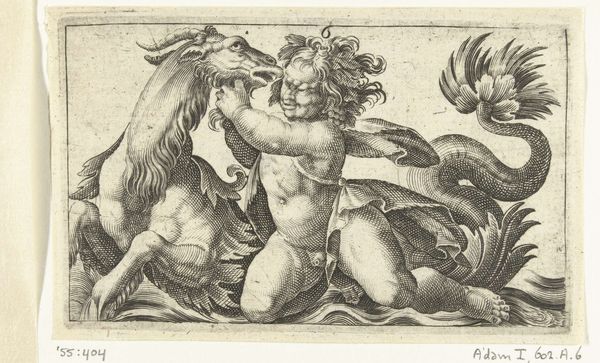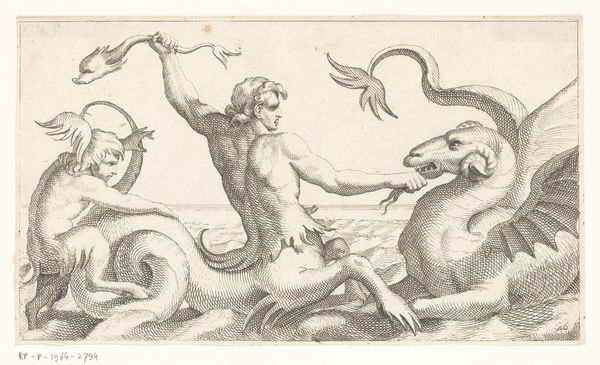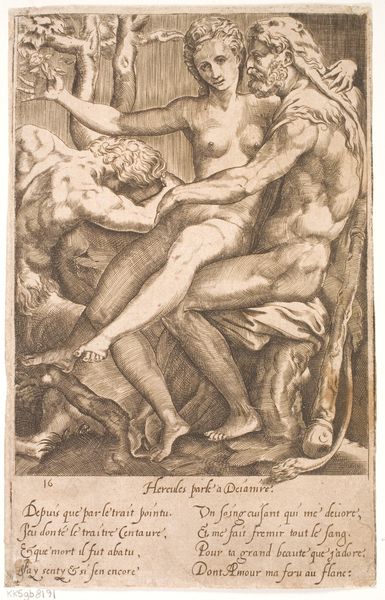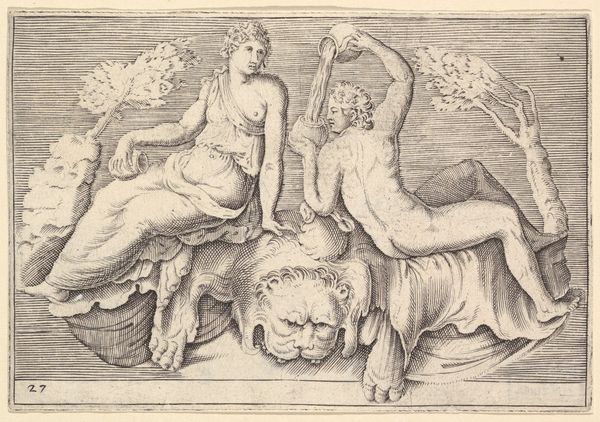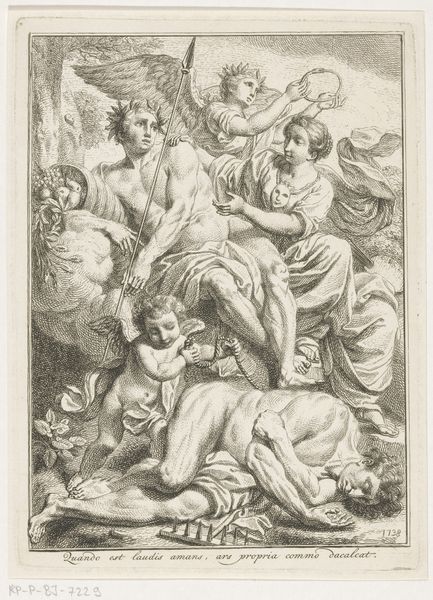
print, engraving
#
allegory
#
baroque
# print
#
figuration
#
nude
#
engraving
Dimensions: height 190 mm, width 325 mm
Copyright: Rijks Museum: Open Domain
Curator: What a curious engraving. At first glance, there’s an intimacy contrasted against what feels like cold rendering of the human form. Editor: Indeed. This piece is titled "Triton and Nymph," and is attributed to Caspar Jacob van Opstal II, dating from around 1670 to 1680. It is, as you observed, an engraving, which allows for those incredibly fine, precise lines. Note also how effectively light and shadow are modulated by this method. Curator: Absolutely. It is interesting how the artist has captured a somewhat Baroque aesthetic with rather severe lines—it feels as if form dominates emotional expression. Notice the intricate details in the hair and the rendering of the muscles, offset against these rather somber gazes shared by Triton and the Nymph. It strikes me as deliberately posed. Editor: The poses, in conjunction with the use of mythological figures, situates this within a larger context of idealized beauty and perhaps veiled political commentary typical of the period. Triton, son of Poseidon, often symbolized power and dominion, while nymphs frequently embodied natural beauty and purity. The figures appear frequently in works of art meant to affirm princely power. The work presents archetypes shaped by the prevailing societal views. Curator: Fascinating point, I suppose this engraving style must also come into play, then? Since mass-produced prints like this are accessible to all people, these depictions, no matter how unrealistic, could solidify cultural values. Do you notice any conflicting interpretations in how our bodies should appear here? Editor: Possibly. If these artworks were shown, and thus displayed ideals about what male power and female innocence should embody, in effect these works shaped and constrained perceptions of beauty. Curator: Ultimately, Van Opstal's print offers us a precise window into Baroque visual ideals and demonstrates how technical choices augment broader cultural narratives. Editor: And seeing this print as an artifact of its era—we come to acknowledge the cultural weight borne by artistic depictions such as this—shaping expectations for genders for centuries.
Comments
No comments
Be the first to comment and join the conversation on the ultimate creative platform.
